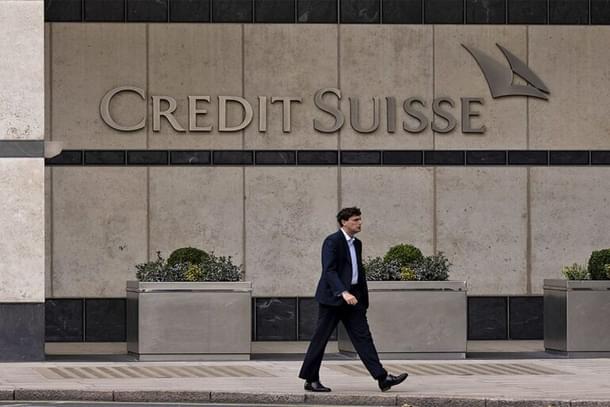Business
Explained: How UBS Acquisition Of Credit Suisse Caused $17 Billion Wipeout For AT1 Bondholders
Business Briefs
Mar 23, 2023, 02:50 PM | Updated 02:51 PM IST
Save & read from anywhere!
Bookmark stories for easy access on any device or the Swarajya app.


Credit Suisse’s takeover by UBS has been quite controversial.
Several long-established rules have been broken to help the transaction pass through, causing several stakeholders significant pain.
For one, shareholder permission – necessary for a deal of such mammoth proportion, has not been taken.
UBS will issue one share of UBS for every 22.48 Credit Suisse shares helped by Credit Suisse investors – indicating a total payment of $ 3.2 billion. The buying price is less than half the market capitalisation of Credit Suisse of Friday, indicating a possibly dire condition.
However, what shocked the bondholders and left them empty-handed was Swiss financial regulator Finma ordering that $17 billion of Credit Suisse’s additional tier 1 (AT1) bonds, a relatively risky debt instrument, will be written down to zero.
AT1 bonds are a type of junior debt that came into existence during the great financial crisis as a form of extra capital.
AT1 bonds, also known as contingent convertibles or ‘Cocos’, can be converted from bonds into equity (or face the danger of being written down entirely), if certain conditions are met, such as the issuing bank’s capital strength falling below a pre-determined trigger level.
This ‘loss absorbing mechanism’ is the key difference between AT1s and regular bonds. Given the huge risks they carry, AT1s are typically the highest-yielding bank bonds investors can buy,
In Europe, banks began issuing AT1s to shore up their reserves. However, these binds are not really safe. In fact, in the UBS deal, these binds were written down to zero at a time when equity was sold at $ 3.25 billion.
Conventionally, any company would pay bondholders first and then pay shareholders (who often receive nothing). On the other hand, during this case, shareholders were paid, but bond values were written down to zero.
While many have complained about the decision, and some bondholders are even in talks with lawyers, the prospectus clearly says that “interest on the Notes shall cease to accrue, the full principal amount of each Note will automatically and permanently be written-down to zero, and holders will lose their entire investment in the notes”.
There are several other signs that these bonds might not really be safe – a default on these bonds by banks is not considered a default. Since interest payments are discretionary, a missed interest payment would not be accounted as a cost for the bank.
The bonds get converted to equity or written down to zero depending on the common equity tier 1 (CET1) capital ratio. If the CET1 ratio falls below a certain benchmark, the condition is triggered and the bonds get converted to equity or are written down to zero.
Many investors had assumed that a ‘bond’ would receive higher priority than equity, but that was not the case – as a result of which, regulators have wiped out $ 17 billion worth of bondholder money.
Some have said the deal would mean a loss of investor faith in AT1s, which is possible, but AT1s have been wiped out in the past as well – only those wipeouts hadn’t received as much attention.
UBS’ stock price has been up for the last five days, indicating that shareholders probably appreciate the deal.
Overall, the transaction would see the creation of an entity with $ 5 trillion in assets under management on the wealth and asset management side. On the wealth management side, the combined entity would have $ 3.4 trillion in assets under management, of which $1.7 trillion belongs to ultra-rich clients who might try to diversify their assets across banks.
On the other hand, the investment banking division has been a problem child for years with heavy losses.
UBS expects to cut $8 billion in costs over the next few years, and the investment banking business would likely be wound down to make the organisation more agile.
The $8 billion cost-cutting exercise will likely target redundant roles, the shutdown of branches situated in similar areas, and the sharing of administrative work and resources.
In the longer run, the government-supported creation of behemoths would lead to market power being concentrated in the hands of a few players, along with possibly increased systemic risk. It also expects Credit Suisse to be a value-accretive acquisition and contribute to earnings from 2027.
The government is offering quite a bit of support with $108 billion in liquidity support and around $10 billion in loss absorption while UBS winds down some unviable businesses.
Nevertheless, the deal is replete with several issues – the lack of shareholder approvals, the liberal use of taxpayer funds to support an entity with a history of dubious activities, and the brushing away of anti-trust rules that would have been applicable during normal times.





